Thrash-metal icon Dave Mustaine details his signature Gibson Vs and why it’s the best body shape. Plus, Brazilian shredder Kiko Loureiro dishes on his signature Ibanez speed demons.
Grammy-winning metal legends Megadeth and their massive headlining 2022 run hit Nashville’s Bridgestone Arena on May 5. Before the headbanging started, PG’s Chris Kies talked gear with Megadeth leader Dave Mustaine, who ran down the specs of his signature Gibson Flying V and showed us why it’s the best body shape for ripping onstage. The band’s dangerously dexterous lead guitarist Kiko Loureiro showed off his stash of dashing Ibanez doublecuts. And both players (plus their techs) share insight on downsizing from an Axe-Fx to a gig-bag-friendly Neural DSP Quad Cortex.
Brought to you by D’Addario XPND Pedalboard.
The Silver Bullet
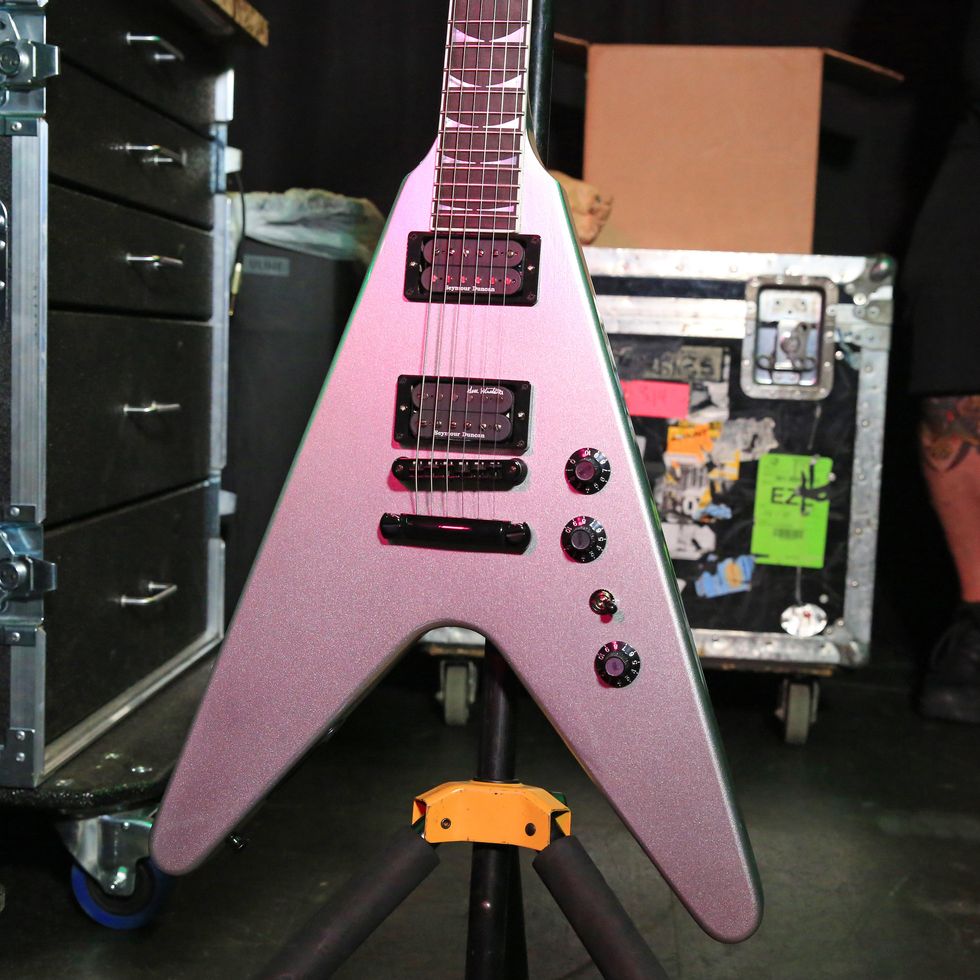
Dave Mustaine has collaborated with several brands for signature models (Jackson, ESP, and Dean) that have all revolved around the V-body shape. In 2021, it was announced Mustaine was forming an alliance with Gibson. The partnership makes absolute sense given Gibson first released the (still) futuristic V and Explorer in 1958. (Astute Gibson historians may point to the Moderne as part of that legendary year, but it was supposedly prototyped in 1957 and never officially released until the early ’80s. The pattern mirrors the release of this year’s Gibson Theodore model.)
The sterling Dave Mustaine Flying V EXP (seen here in silver metallic) has some slight tweaks to the original recipe. It has a 25.5" scale length with 24 medium jumbo frets, mother-of-pearl teeth inlays, a 6-in-line Explorer headstock with Grover Mini Rotomatic tuners and kidney buttons, a Graph Tech nut, and a set of Mustaine’s signature Seymour Duncan Thrash Factor humbuckers. Another change includes moving the output jack onto the inside of the top wing. The V’s tonewoods consist of a mahogany body, mahogany neck, and rosewood fretboard. Mustaine mentions in the Rundown he worked considerably with Gibson to refine the baseball-bat neck for something with a slim taper grip and ergonomic flow.
All of Mustaine’s guitars take Cleartone strings—custom sets (.011–.054) for D-standard, Cleartone Dave Mustaine Heavy Series (.010–.052) for standard, and, no matter what, he’s shredding on Cleartone .73 mm picks.
Natural Knockout
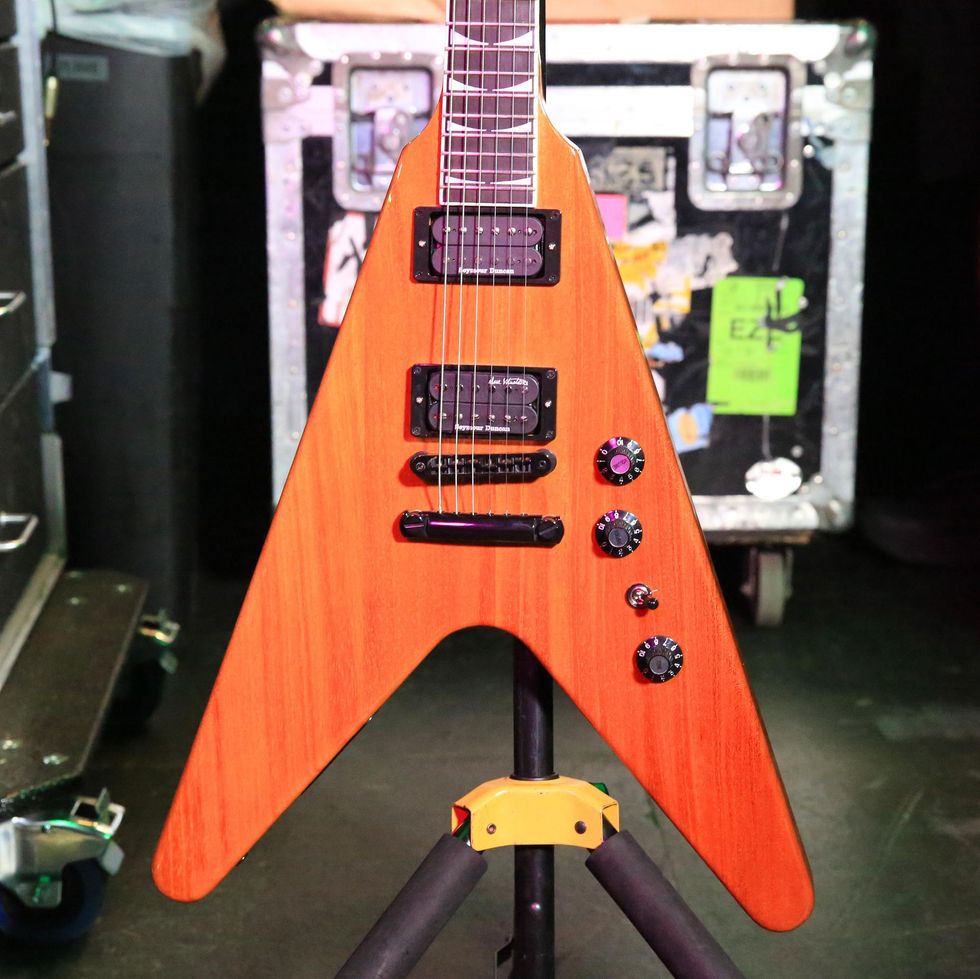
Here’s the second option for Mustaine’s production signature V that’s identical to the previous except that it’s finished in an antique natural.
Vivacious V
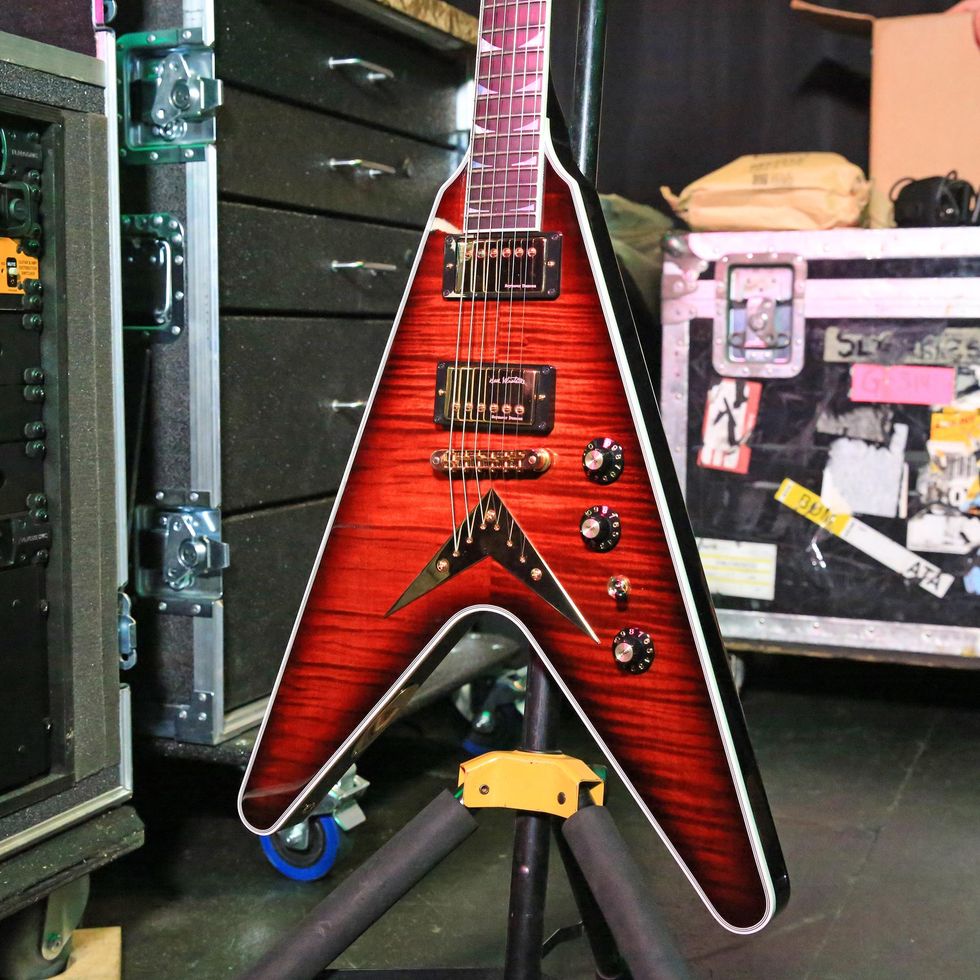
Being Dave Mustaine probably opens a lot of doors, and one such invitation is working with Gibson’s Nashville-based Custom Shop. Here’s a regal V (decked out with his sig specs) that features a flame maple cap and tasty binding. Note the bridge: Dave’s prototype instrument has through-body string loading. Expect to hear more about this model shortly.
Skin o’ My Teeth
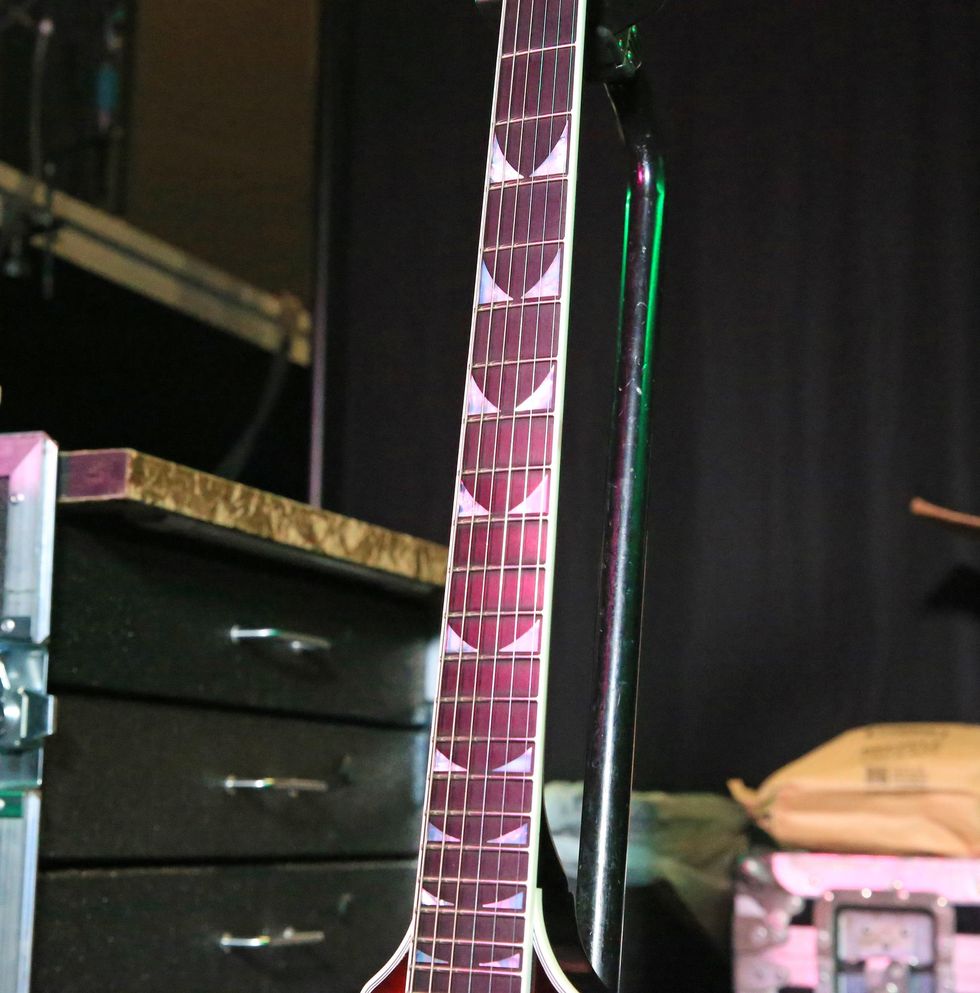
Vic Rattlehead, Welcome to Smashville
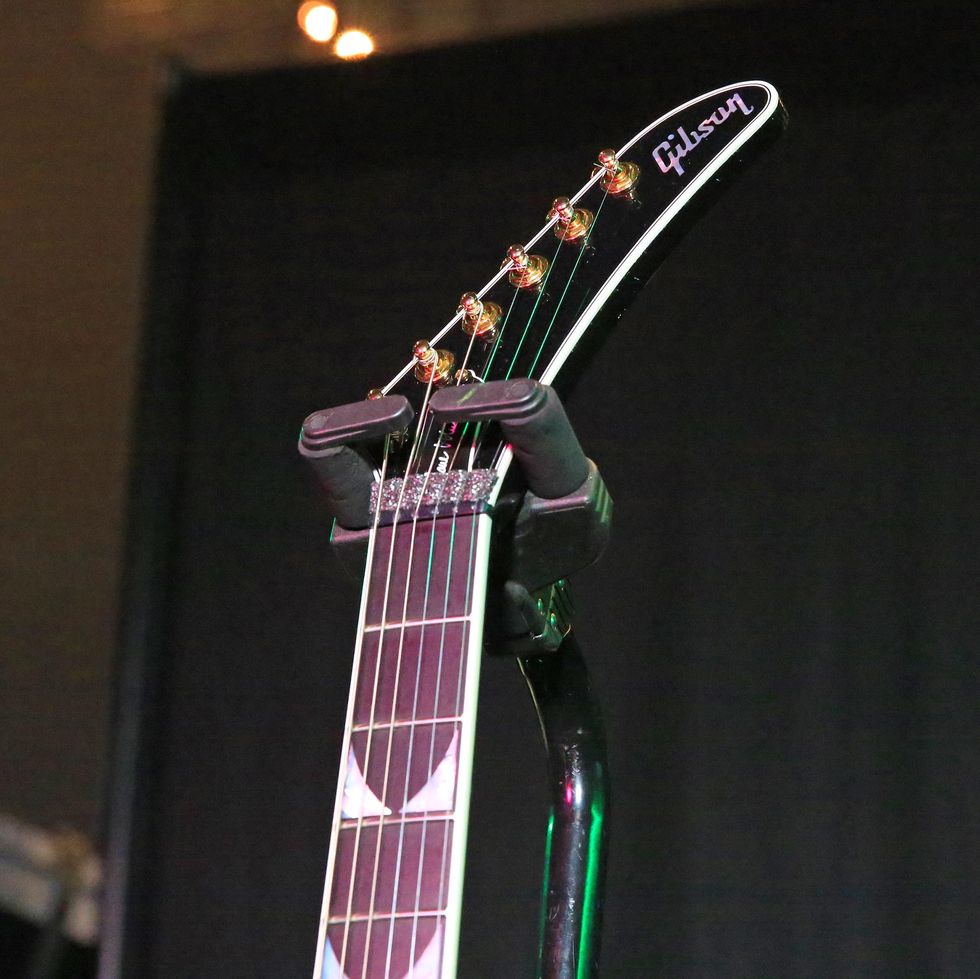
The Explorer headstock (also outfitted on Mustaine’s Vs) could be used in a pinch by the hockey heavies on the Nashville Predators.
Tuxedo V
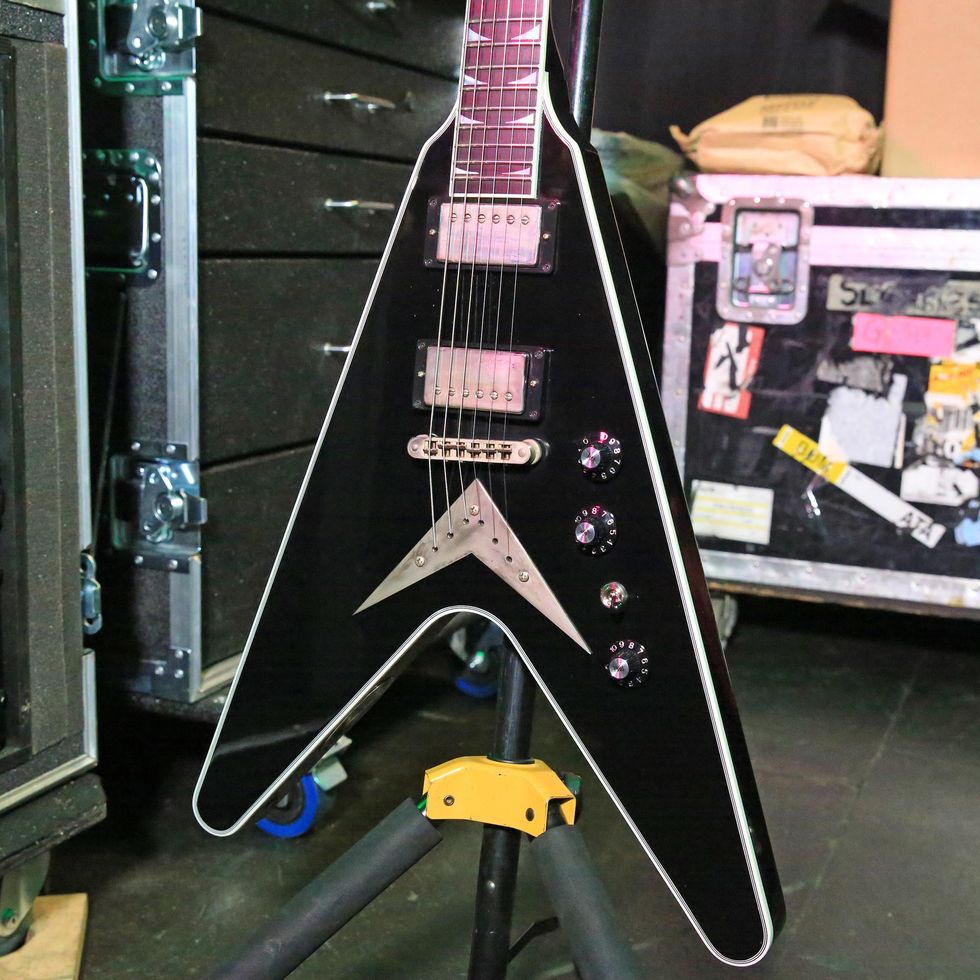
The last of Mustaine’s Vs is another Custom Shop offering that is both classy and cool.
Green Mamba
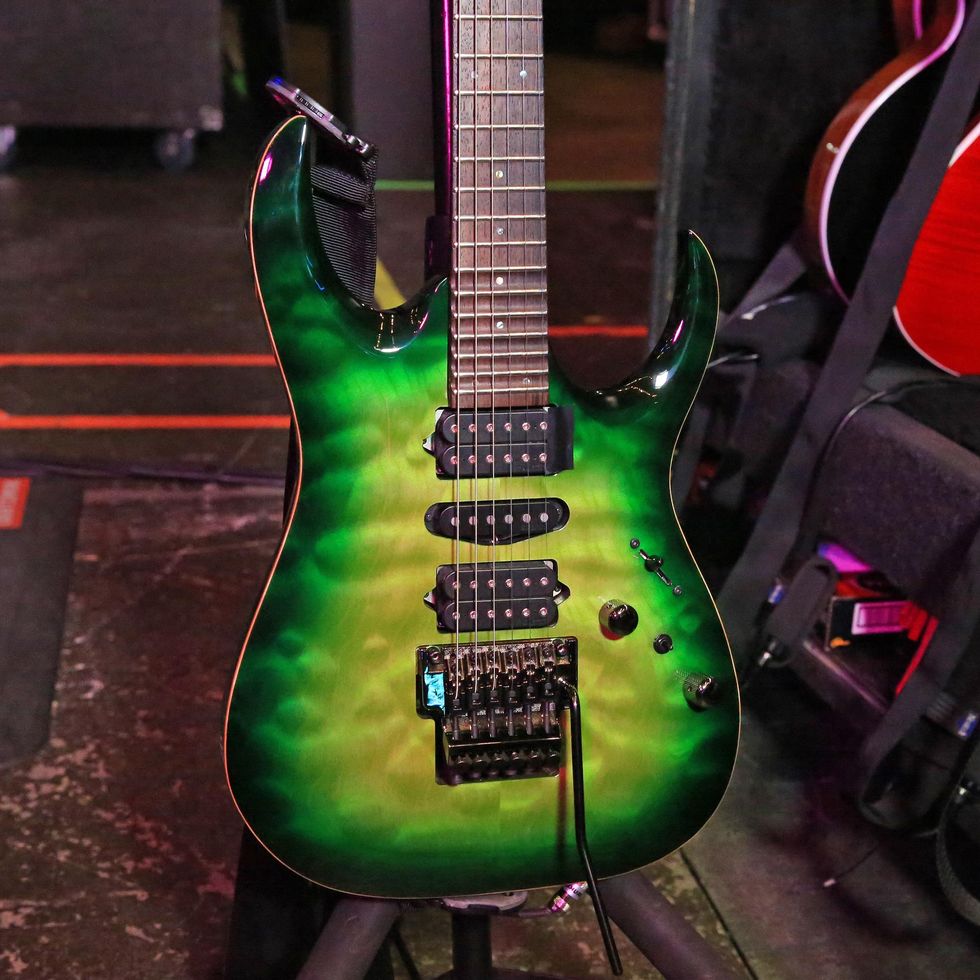
Brazilian flamethrowing guitarist Kiko Loureiro officially joined Megadeth in April 2015. The first album he contributed to was 2016’s Dystopia, which earned Megadeth its only Grammy. An impressive start!
Providing a lot of nightly fireworks is Kiko’s trove of signature Ibanez racers. First up is the 2018 Ibanez KIKO200 GMT Kiko Loureiro model that has an African mahogany body (RG style) with a AAAA quilted maple top, wenge-maple neck, 24 jumbo frets (with scalloped frets in 19-24) on a Macassar ebony board, and an Ibanez Edge tremolo. Originally these models came with custom-voiced Ibanez KIKO pickups, but he’s now working with DiMarzio for his signature H-S-H configuration. All Loureiro’s electrics take D’Addario NYXLs—either .010–.046 for standard or .010–.052 for D-standard—and he attacks the strings with D’Addario heavy picks.
A 100 For Kiko!
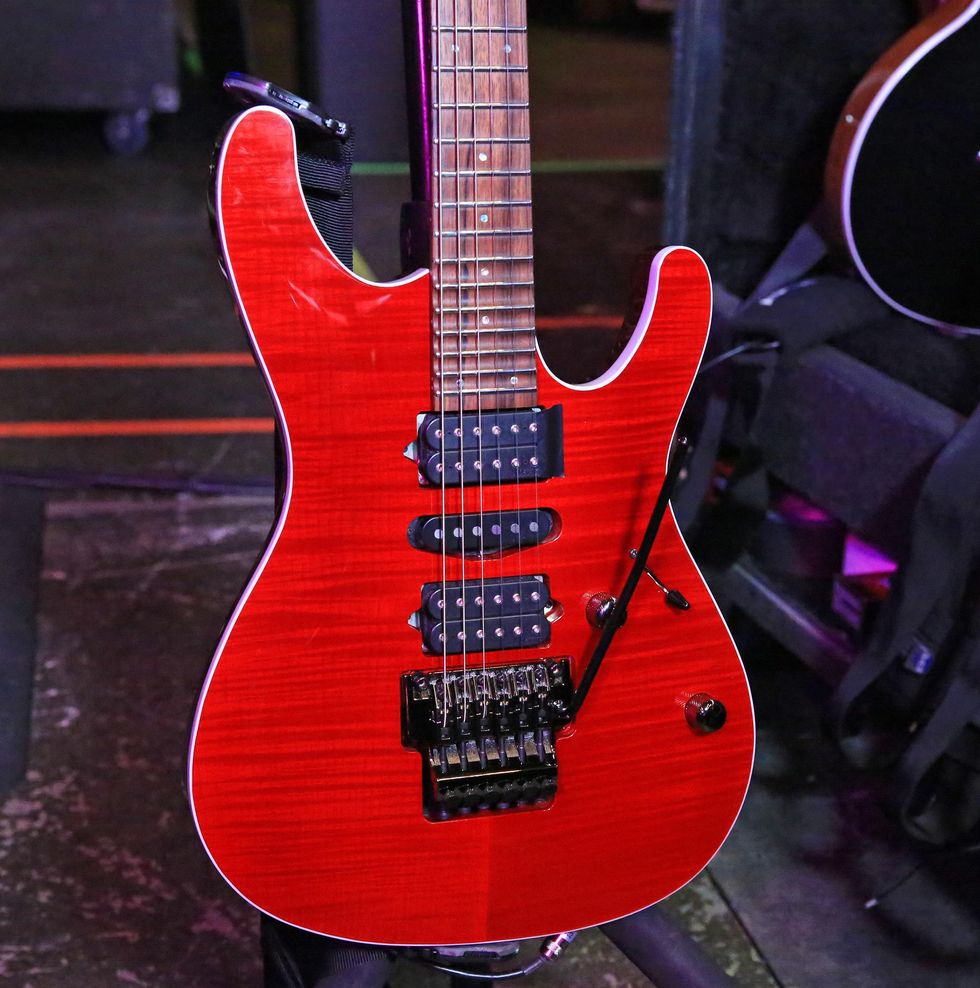
The Kiko 100 was his first namesake shred sidekick with Ibanez. This one was done by the L.A. Custom Shop and features similar specs to the previous 200, but has an Ibanez S body shape and some different tonewoods—an alder body with a flame maple top, 5-piece walnut-and-maple neck, and a rosewood fretboard.
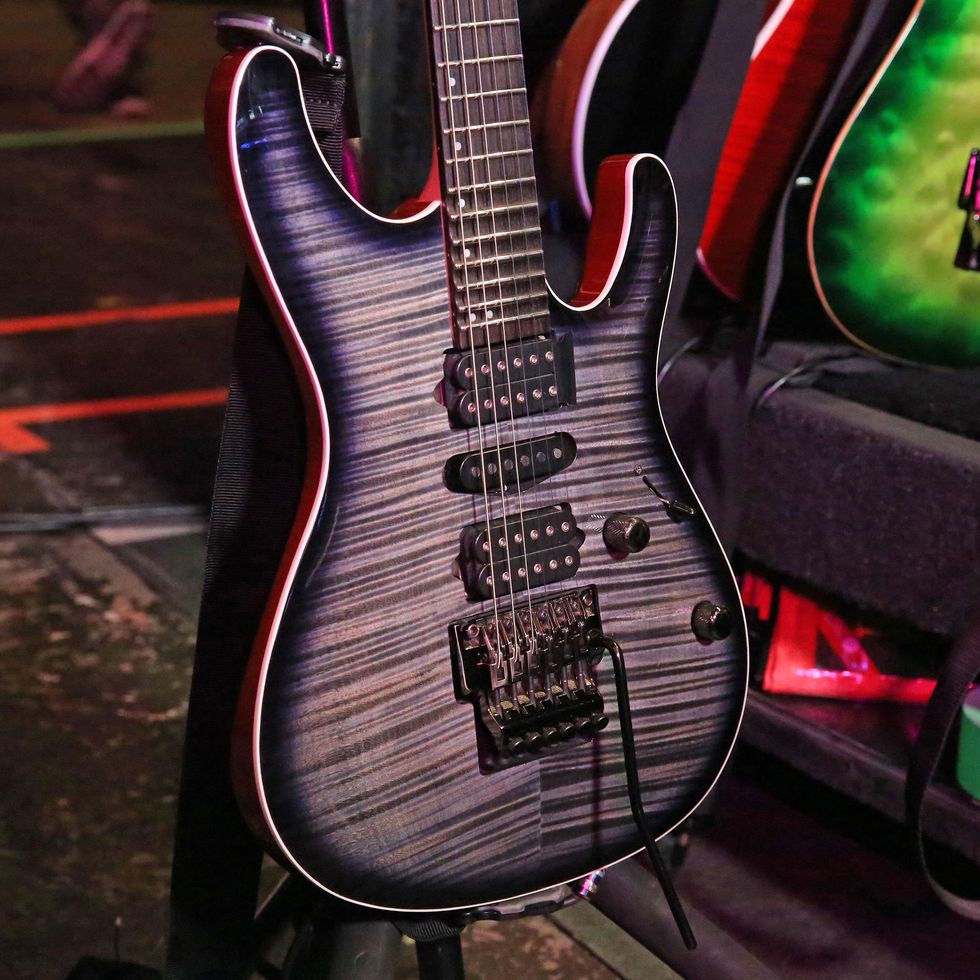
Here’s what seems to be another Ibanez Kiko100 model, but it has a wenge-maple neck similar to the one seen on the first green Kiko200 model.
Les Paul Means Less Frets
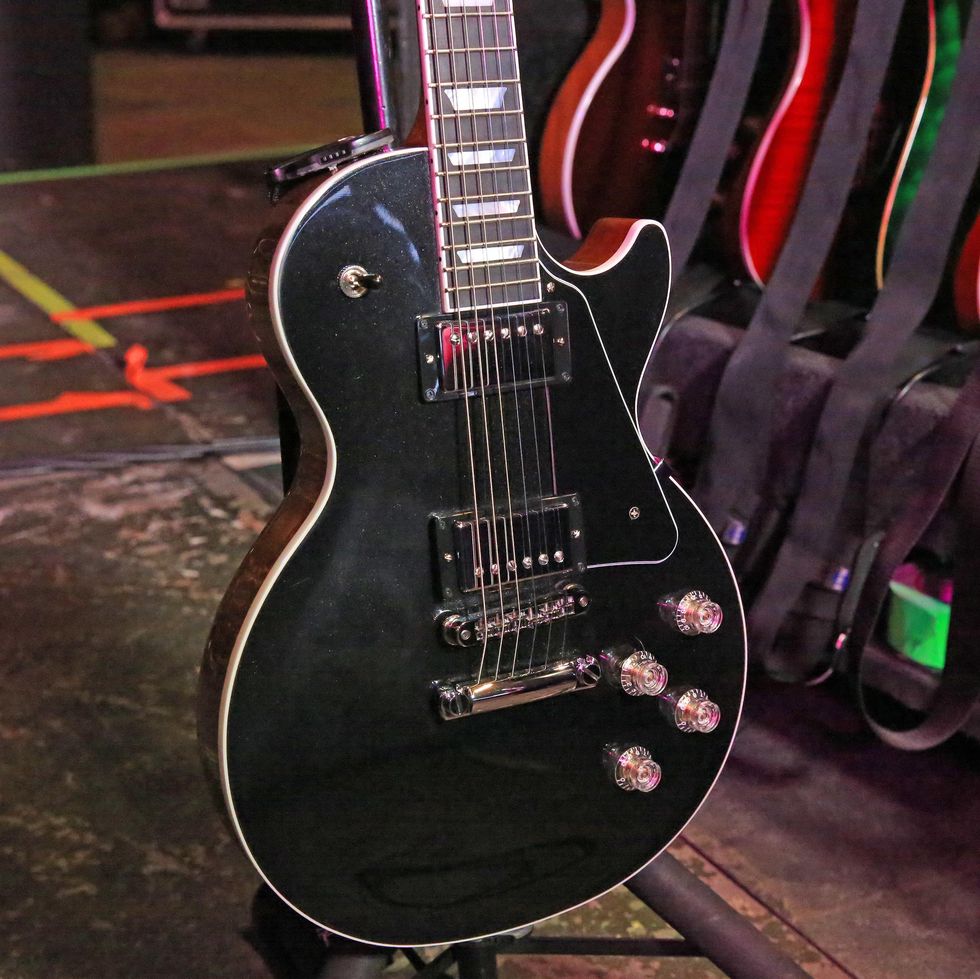
With captain Dave Mustaine onboard with Gibson, Kiko has been auditioning some Les Pauls for the Megadeth 2022 tour. Here’s a brand-new Gibson Les Paul Modern finished in a subdued sparkle they call graphite top. Contemporary updates on this classic includes a lighter, chambered mahogany body, an asymmetrical SlimTaper neck profile, a contoured and comfortable neck-and-heel joint, and while the company’s BurstBucker Pro and BurstBucker Pro + pickups have been in their stable for years, the Modern gives them added options with push-pull volume knobs engaging P-90 tones. There are only certain songs that Kiko can play the Les Pauls on (“Peace Sells” and “Trust”) because much of Megadeth’s material requires 24 frets (“Holy Wars... The Punishment Due,” etc.).
Kiko Goes Classical
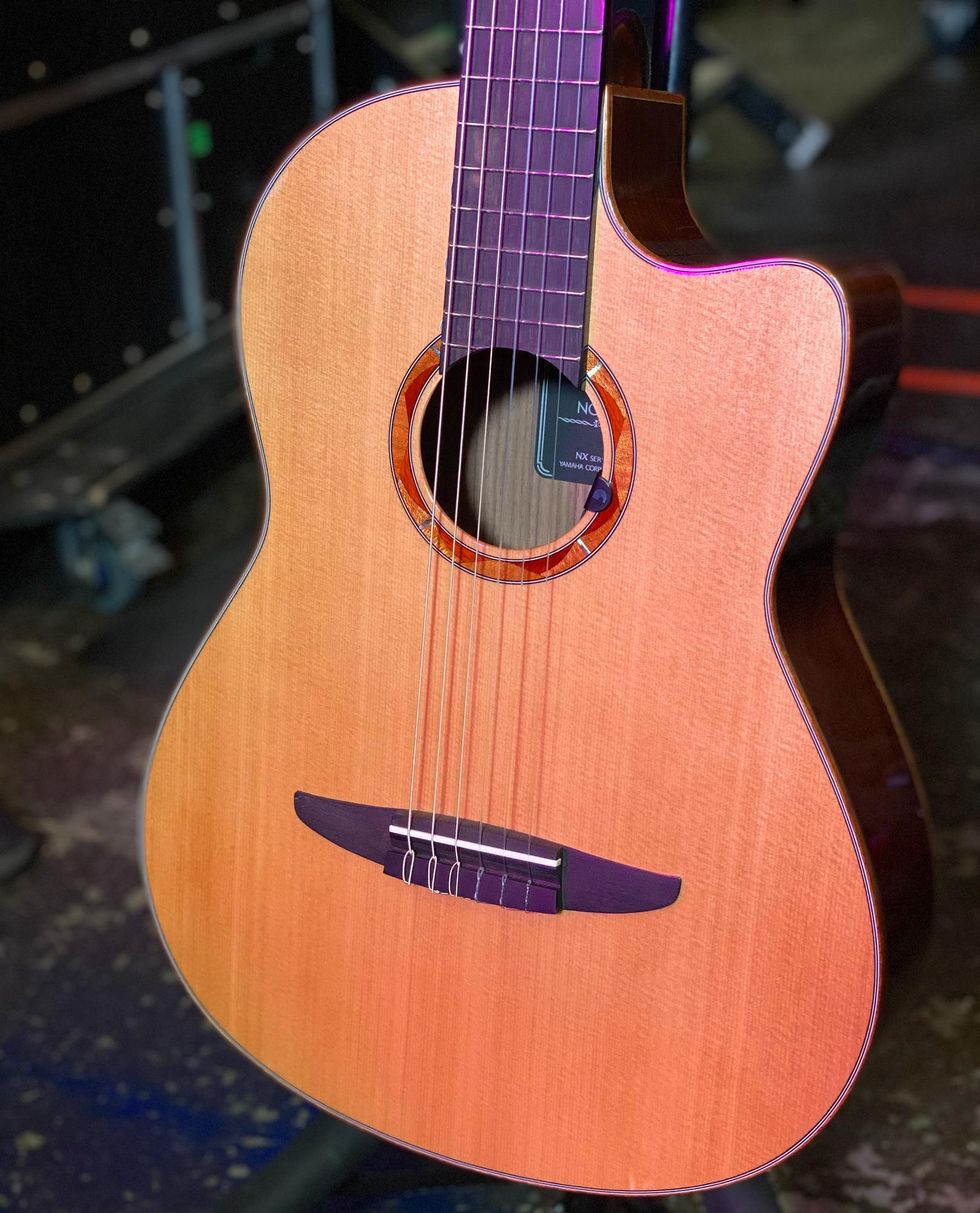
For the opening of the instrumental tour de force “Conquer or Die,” Kiko uses this Yamaha NCX3 nylon-string acoustic-electric complete with the company’s Atmosfeel Electronics.
Loureiro Leads the Way
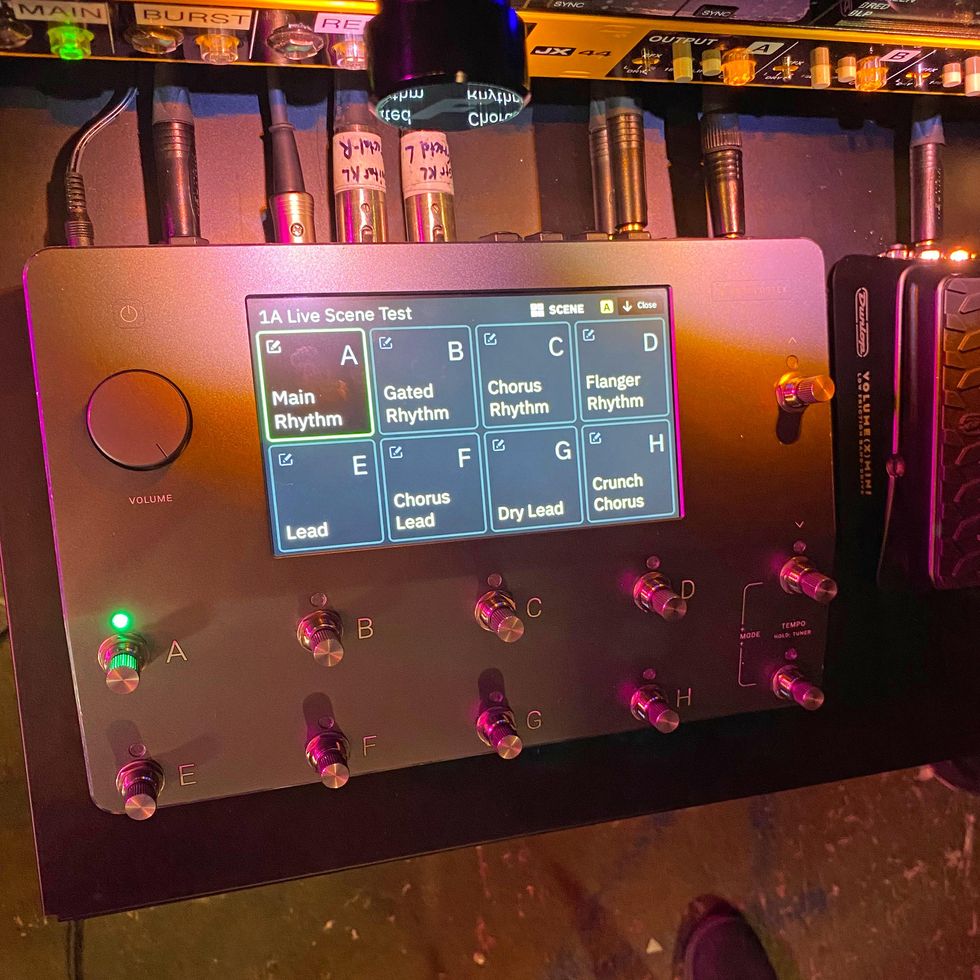
When touring shut down, Kiko looked to stay creative, so he took the plunge into the Neural DSP Quad Cortex. Impressed with its power, versatility, programmability, and condensed packaging, he incorporated it into his live rig. When Megadeth rehearsals restarted, Mustaine eyed the new unit and dropped his Axe-Fx for the downsized dynamo. For their worldwide 2022 run, both guitarists were using the Quad Cortex. Kiko preferred relying on Friedman BE patches, where Dave stayed familiar with Marshall settings. Both split their units between direct to FOH and onstage to Marshall Dave Mustaine Signature 1960B-DM 4x12s loaded with G12-V30 Marshall Celestion custom Dave Mustaine Vintage speakers.
Dave Mustaine’s Rack
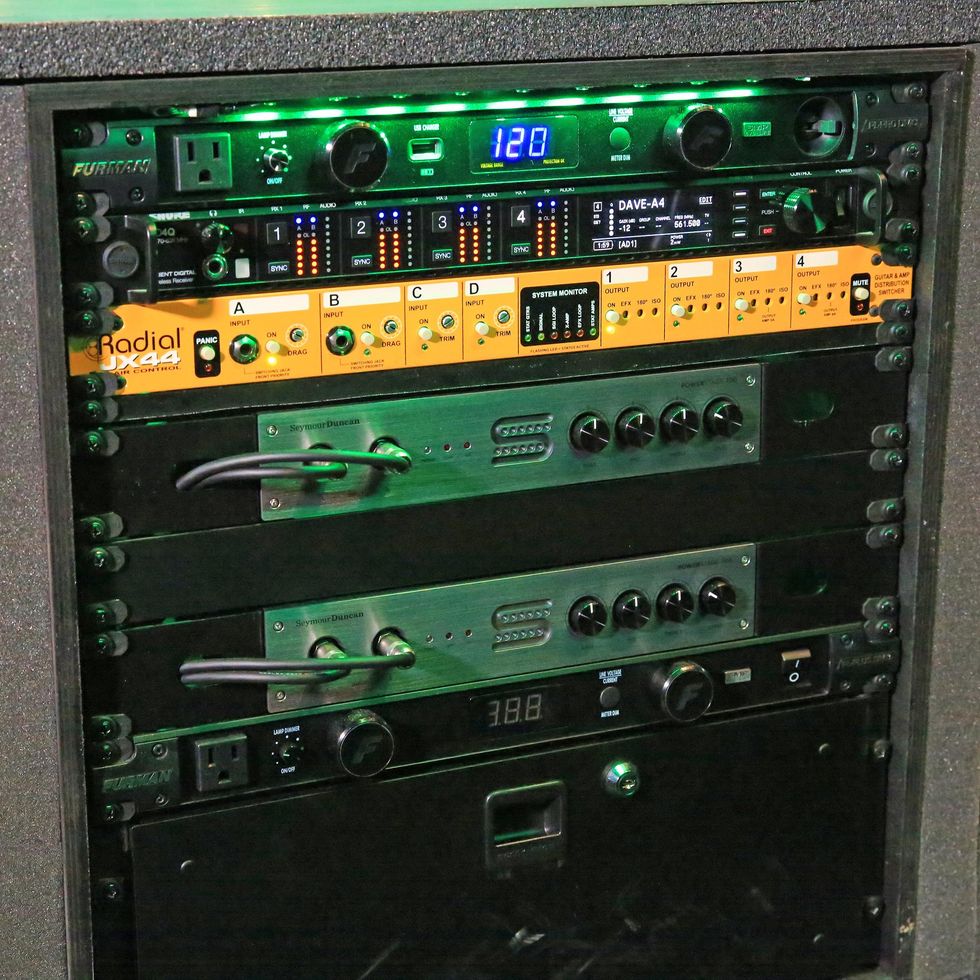
Mustaine’s Quad Cortex’s run off a pair of Seymour Duncan PowerStage 700 amps. His guitars run through the Shure Axient AD4Q rackmount wireless unit and get controlled and organized by the Radial JX44 Guitar Signal Manager.
Kiko Loureiro’s Rack
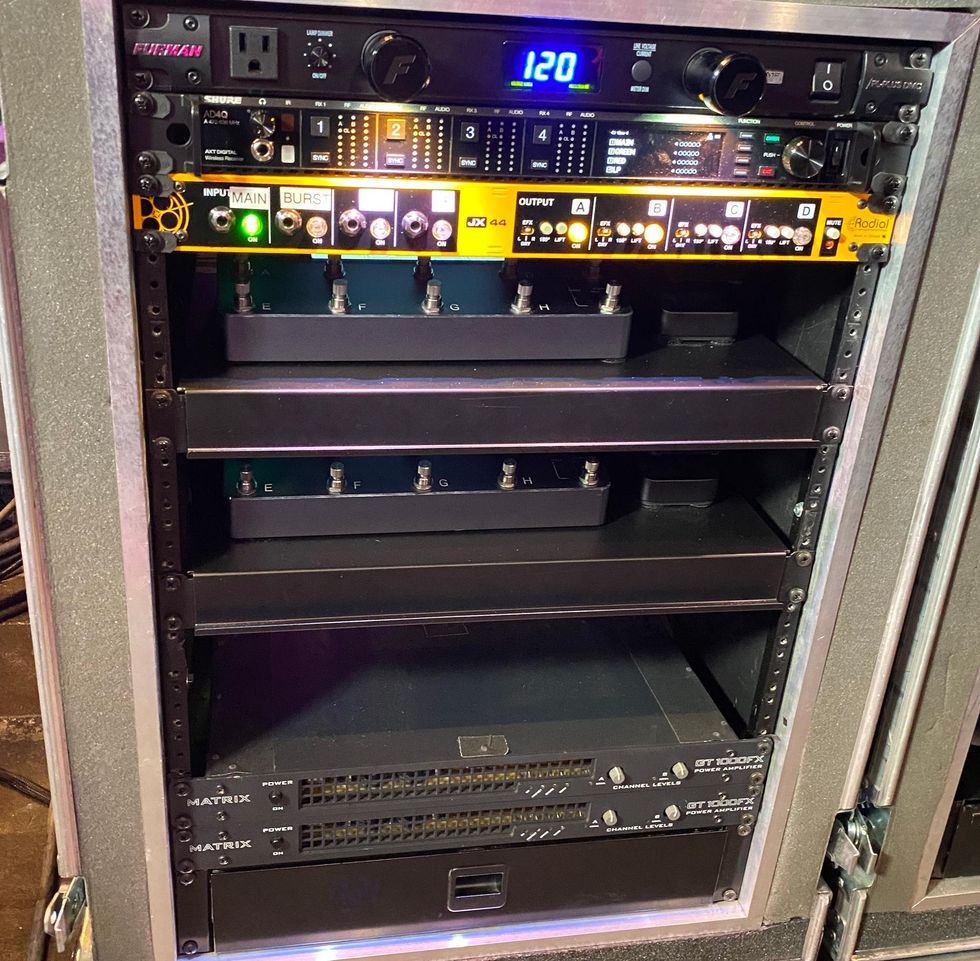
Like Mustaine, Kiko puts his guitars through the Shure Axient AD4Q rackmount wireless unit and Radial JX44 Guitar Signal Manager, but he powers his Quad Cortexes with a couple of Matrix Amplification GT1000FX amps.


![Rig Rundown: Megadeth [2022]](https://www.premierguitar.com/media-library/rig-rundown-megadeth-s-dave-mustaine-kiko-loureiro-2022.jpg?id=30984399&width=1200&height=675)


![Rig Rundown: Russian Circles’ Mike Sullivan [2025]](https://www.premierguitar.com/media-library/youtube.jpg?id=62303631&width=1245&height=700&quality=70&coordinates=0%2C0%2C0%2C0)



















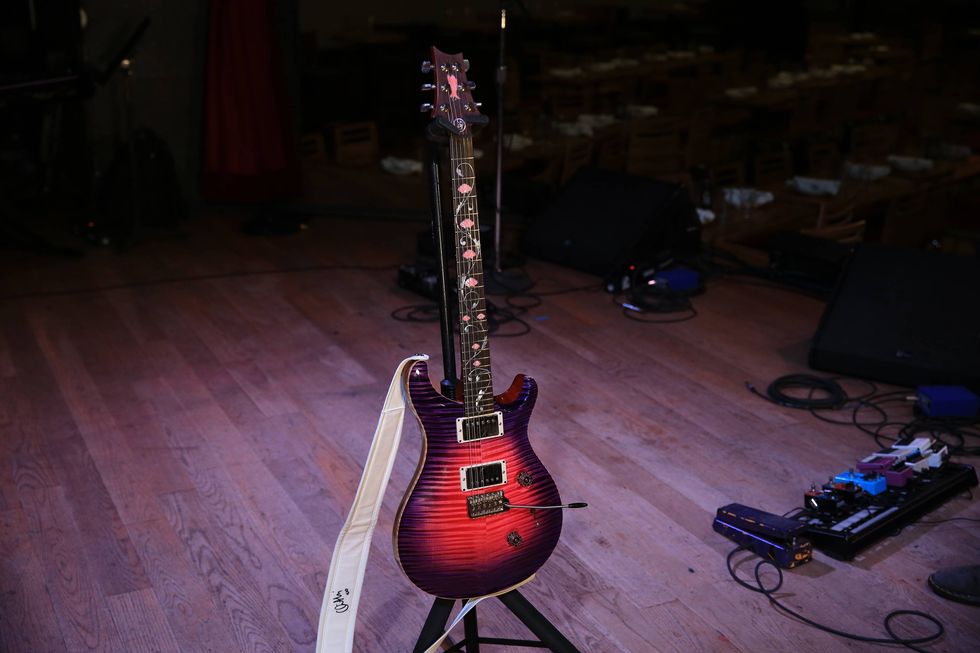
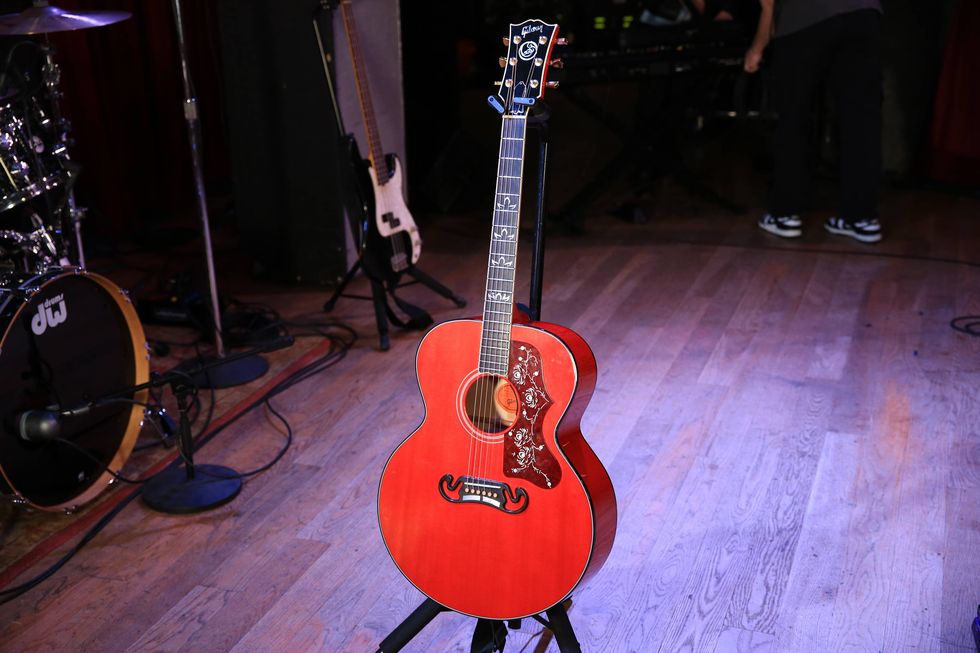
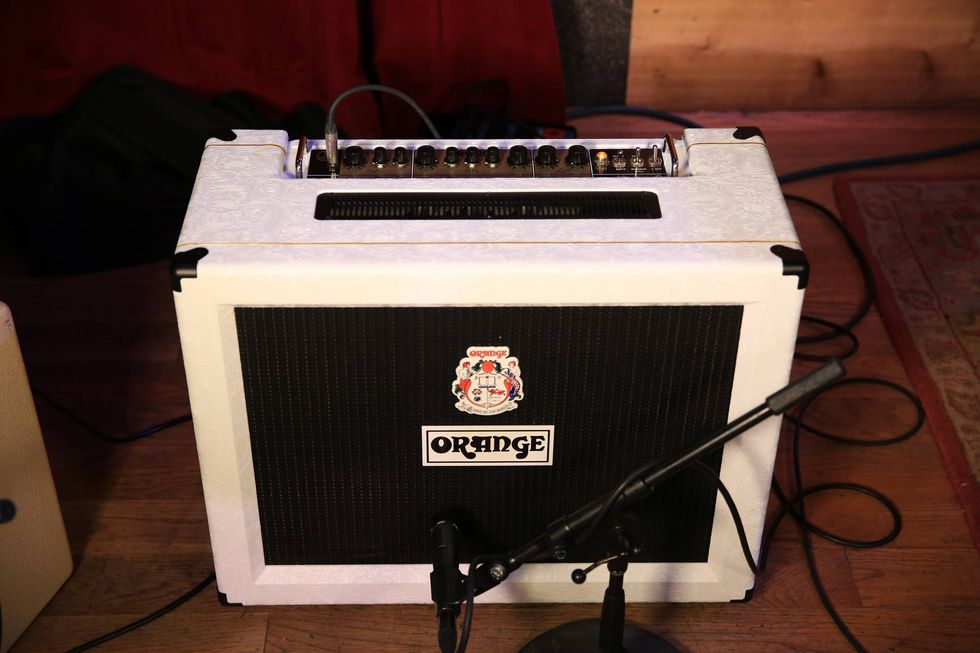
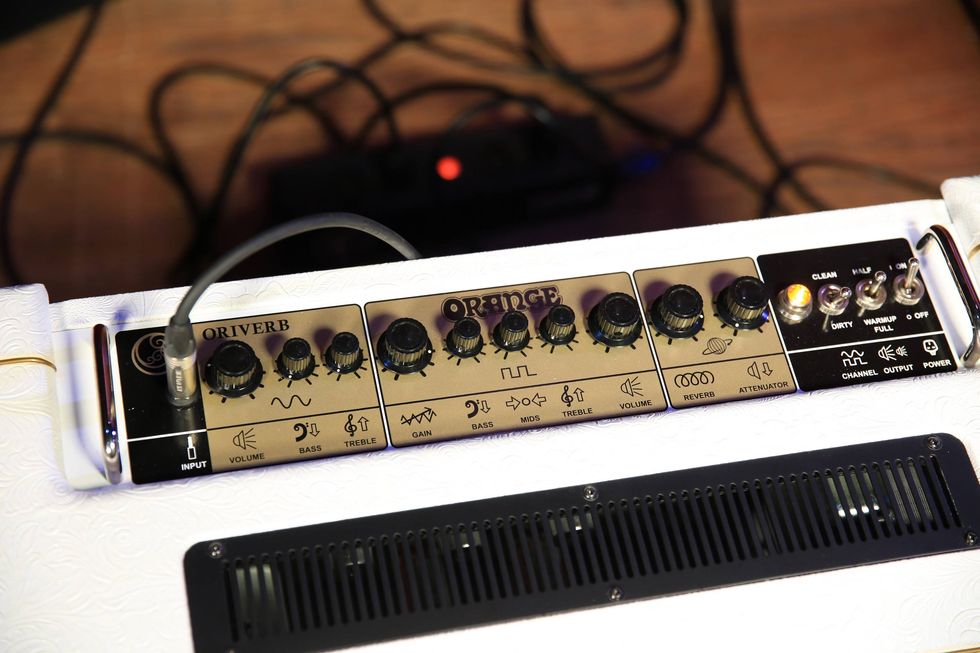
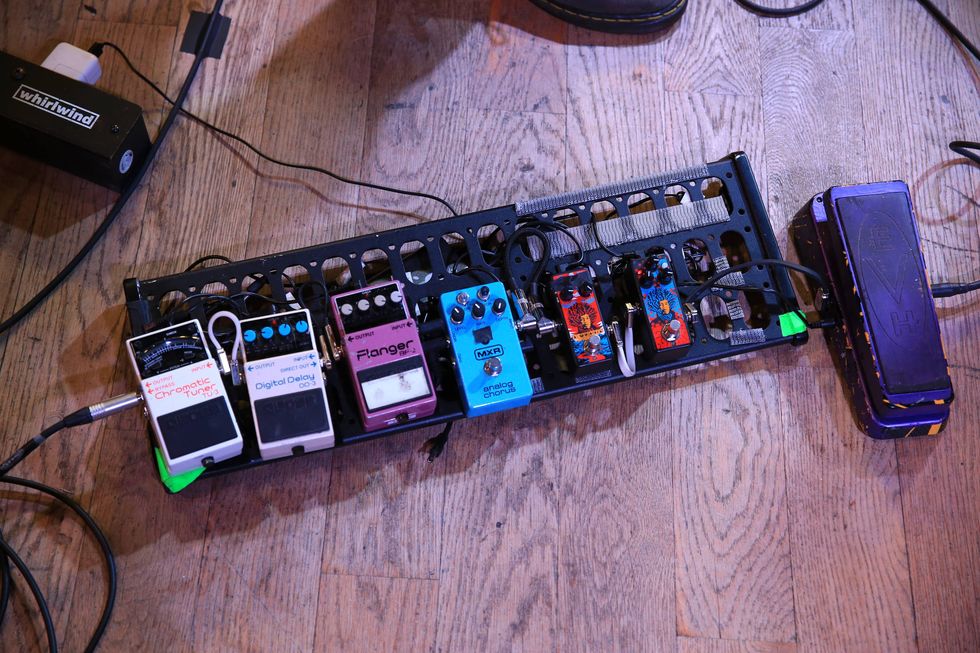

![Rig Rundown: AFI [2025]](https://www.premierguitar.com/media-library/youtube.jpg?id=62064741&width=1245&height=700&quality=70&coordinates=0%2C0%2C0%2C0)




















 Zach loves his Sovtek Mig 60 head, which he plays through a cab he built himself at a pipe-organ shop in Denver. Every glue joint is lined with thin leather for maximum air tightness, and it’s stocked with Celestion G12M Greenback speakers.
Zach loves his Sovtek Mig 60 head, which he plays through a cab he built himself at a pipe-organ shop in Denver. Every glue joint is lined with thin leather for maximum air tightness, and it’s stocked with Celestion G12M Greenback speakers.
















